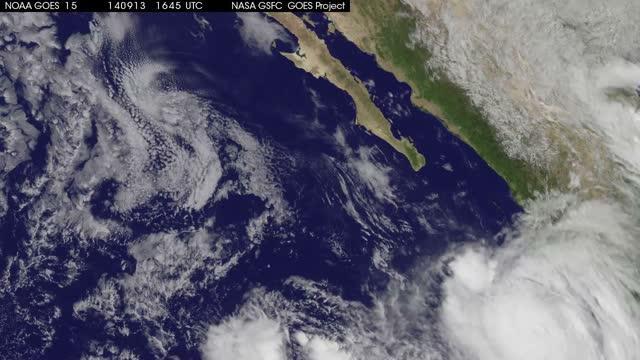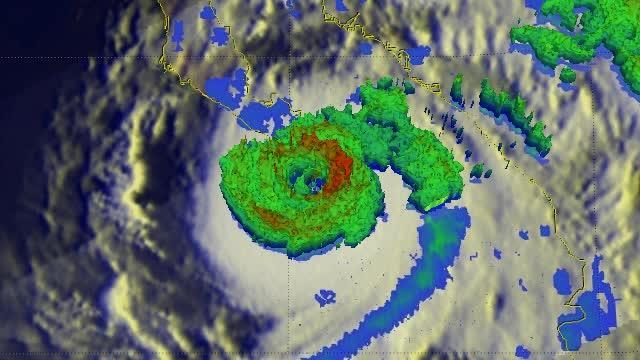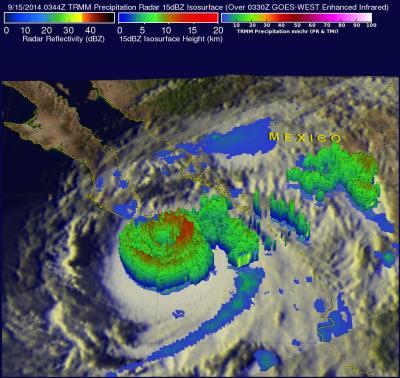Torrential rainfall is predicted to continue near the weakening system. Flash floods and landslides with rainfall totals of over 152-305 mm (6-12 inches) are predicted by the NHC as Odile travels over the Baja California Peninsula. Western Mexico is expected to feel the effects of Hurricane Odile today and tomorrow as the hurricane continues to hug the coast. A Hurricane Warning is in effect for Baja California Sur from Punta Abreojos to Santa Rosalia. A Hurricane Watch remains in effect for the west coast of Baja California Sur from north of Punta Abreojos to Punta Eugenia. A Tropical Storm Warning is in effect for the East Coast of the Baja Peninsula from north of Santa Rosalia to Bahia De Los Angeles, the west coast of the Baja Peninsula from north of Punta Eugenia to San Jose De Las Palomas and mainland Mexico from Altata to Bahia Kino.
A Tropical Storm Watch is in effect for the west coast of The Baja Peninsula North of San Jose De Las Palomas to Cabo San Quintin, the east coast of the Baja Peninsula From North of Bahia De Los Angeles to San Felipe and mainland Mexico from north of Bahia Kino to Puerto Libertad.
Although Odile continues to weaken heavy rainfall and flooding pose serious threats.

This animation of NOAA's GOES-West satellite imagery from Sept. 13 through Sept. 15 shows Hurricane Odile's movement and landfall near Cabo San Lucas on Mexico's Baja California. TRT 0:42
(Photo Credit: Image : NASA/NOAA GOES Project)

NASA's TRMM Satellite measured rainfall in Odile on Sept. 15. Odile contained intense thunderstorms around the eye above 12.5 km (about 7.8 miles) high dropping rain at a rate of over 188.4 mm (about 7.4 inches) per hour.
(Photo Credit: Image : NASA/SSAI, Hal Pierce)

NASA's TRMM Satellite measured rainfall in Odile on Sept. 15. Odile contained intense thunderstorms around the eye above 12.5 km (about 7.8 miles) high dropping rain at a rate of over 188.4 mm (about 7.4 inches) per hour.
(Photo Credit: Image : NASA/SSAI, Hal Pierce)
Source: NASA/Goddard Space Flight Center